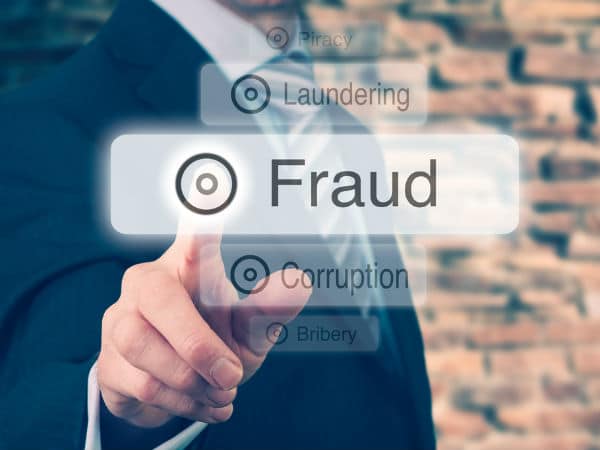The Shifting Landscape of Payment Fraud: Protecting Yourself in the Digital Age

Definition: Payment and transaction fraud encompasses any deceptive or unauthorized activity designed to steal funds, goods, or personal information during a financial exchange.
In our increasingly digital world, the convenience of online transactions comes with a price: the rising threat of payment and transaction fraud. Fraudsters are constantly evolving their techniques, leaving consumers and businesses scrambling for protection. This article delves into the ever-changing tactics of fraudsters, the impacts of such crimes, and how to safeguard yourself in this complex landscape.
Fraud Beyond the Card: Expanding Tactics and Targets
The days of simple credit card skimming are rapidly phasing out. Today’s fraudsters have a diversified arsenal.
Expanding the Fraudster’s Toolkit
Let’s dissect some of the lesser-known, yet increasingly prevalent, tactics fraudsters use to widen their net:
- Synthetic Identity Fraud: This insidious scheme involves creating completely fabricated identities using a mix of real and fake information. These identities are often built over time to gain legitimacy, making them harder to detect and allowing criminals to open fraudulent accounts or apply for loans.
- Charity & Disaster Scams: Fraudsters capitalize on people’s generosity by setting up fake charities or impersonating legitimate organizations, especially in the wake of natural disasters or humanitarian crises. These scams elicit donations that never reach their intended recipients.
- Romance Scams: Manipulating emotions, fraudsters lure victims into online relationships, gradually building trust before requesting money for supposed emergencies or investment opportunities. These scams exploit a victim’s vulnerability and can cause substantial financial and emotional damage.
- Gift Card Fraud: Fraudsters may impersonate government agencies or trusted companies, demanding immediate payment with gift cards. The cards are then quickly liquidated, leaving the victim out of pocket with no recourse.
These tactics don’t just target traditional credit cards. Cryptocurrency exchanges, mobile payment apps, and even online gaming accounts have become hotbeds for fraudulent activity.
New Targets on The Horizon
As the digital world expands, so do the opportunities for fraudsters:
- Loyalty Programs and Rewards: Hackers breach loyalty program accounts to steal accumulated points or rewards, redeeming them for goods or services.
- Online Marketplaces: Scammers create fake seller profiles on popular online marketplaces, offering counterfeit goods or never fulfilling orders after payment.
- Digital Services: Fraudulent subscriptions or unauthorized charges for streaming platforms, digital gaming accounts, and other online services are rising.
- The Metaverse: As virtual worlds and economies within the metaverse develop, fraudsters will undoubtedly find ways to exploit vulnerabilities, whether through asset theft, counterfeit virtual goods, or scams specifically tailored to this new environment.
The Ripple Effects: Beyond Financial Loss
Payment and transaction fraud go far beyond stolen money or unauthorized charges. The consequences can be severe:
- Damaged Credit: Fraudulent purchases and accounts can harm your credit score, impacting your ability to secure loans or lines of credit.
- Reputational Harm: Businesses suffer loss of customer trust and damage to their brand image after security breaches.
- Lost Time and Resources: Investigating fraud, disputing charges, and increasing security measures consume precious resources for both individuals and businesses.
- Emotional Toll: Victims experience stress, anxiety, and a sense of violated privacy.
Staying Ahead of the Curve: Key Strategies
Protecting yourself in this fraud-ridden landscape requires vigilance and proactive measures:
- Strong Passwords & MFA: Use unique, complex passwords for every account, and enable multi-factor authentication (MFA) where possible.
- Spotting the Red Flags: Learn to identify phishing attempts – strange email addresses, misspelled URLs, urgent requests for information.
- Secure Software & Connections: Keep antivirus software updated, and avoid public Wi-Fi for sensitive transactions.
- Zero-Trust Policy: Question unexpected emails, links, or phone calls, even if they appear to be from familiar sources. Always verify independently.
- Be Data Smart: Limit the personal information you share online, and monitor your bank and credit card statements closely.
Beyond Passwords: Unconventional Strategies to Outsmart Fraudsters
Absolutely! Here’s a unique angle on preventing payment and transaction fraud, focusing on less commonly discussed tactics that are tailored for SEO:
Beyond Passwords: Unconventional Strategies to Outsmart Fraudsters
We’re all familiar with basic fraud prevention – strong passwords, secure websites, yada yada. But to truly stay ahead of the curve, it’s time to think outside the digital security box. Here are a few unconventional tactics to add to your anti-fraud arsenal:
- Your Online Footprint is Your First Defense: Limit information shared on social media profiles. Oversharing about vacations (empty house!), recent purchases (tempting targets), or personal details can be goldmines for fraudsters.
- Be a Browser Scrooge: Disable the autofill feature in your web browser that stores addresses and credit card numbers. Yes, it’s less convenient, but it reduces the treasure trove of data a simple hack could reveal.
- Dedicated Devices for the Win: If possible, designate one computer or device specifically for online banking and financial transactions. Keep it clean of games, social media, and other apps that can increase cyber risk.
- Think Like a Fraudster: Put yourself in the shoes of a scammer. What information would you need to pull off a convincing attack? Now, actively work to make finding those details harder.
- “Notify Me” Is Your New Best Friend: Most banks and credit cards allow you to set up transaction alerts. Get notified for every purchase, or customize thresholds to ping you for unusually large or out-of-pattern spending.
Proactive is the New Password
These strategies might seem unusual, but they address evolving fraud tactics:
- Social Engineering Combat: Less about hacking, more about manipulating you based on available information. Limiting your footprint makes this harder.
- Convenience vs. Security: Autofill is handy, but it’s a security weak spot. The extra effort protects against simple hacks that yield big data.
- Compartmentalization Matters: One compromised device doesn’t mean your entire financial life is on the line.
Businesses Must Adapt
Companies bear a heavy responsibility for fraud prevention. This means implementing:
- Advanced Fraud Detection: AI and machine learning tools that analyze transaction patterns and flag suspicious activity.
- Customer Education: Proactive guidance for customers on how to recognize and avoid fraud attempts.
- Data Security Standards: Strict compliance with regulations like PCI DSS to protect sensitive payment data.
The Future of Fraud Fighting is Collaborative
Individuals and businesses alone cannot defeat this wave of fraud. Collaborative efforts are essential:
- Information Sharing: Banks, payment processors, and law enforcement should share insights into emerging fraud patterns.
- Regulatory Updates: Laws must keep pace with evolving fraud techniques, ensuring effective countermeasures.
Payment and transaction fraud will continue to be a thorn in the side of our digital economy. But by staying informed, practicing cyber hygiene, and fostering collaboration, we can minimize the risks and protect both ourselves and the integrity of our financial systems.
Let me know if you’d like me to refine this further or address specific aspects of payment and transaction fraud.sharemore_vert
